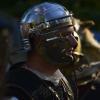Exotic origins of Roman Londoners revealed by DNA analysis of bones
-
Теми
-
- 27 мнения
- 628 views
-
- 2 мнения
- 406 views
-
Руско-украинската война 2022-2024 година. 1 2 3 4 41
От Р. Теодосиев, in Руско-украинската война 2022 година.
- 1016 мнения
- 39639 views
-
- 1 мнение
- 36 views
-
- 910 мнения
- 80694 views
-
-
Последно разглеждащи 0 Потребители
- No registered users viewing this page.



Recommended Posts
Напиши мнение
Може да публикувате сега и да се регистрирате по-късно. Ако вече имате акаунт, влезте от ТУК , за да публикувате.